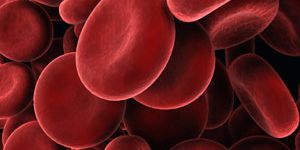
Much of the liver's metabolic function is governed by circadian rhythms - our own body clock - and UC Irvine researchers have now found two independent mechanisms by which this occurs. The study, published online July 31 in Cell, reveals new information about the body clock's sway over metabolism and points the way to more focused drug treatments for liver disease and such metabolic disorders as obesity and diabetes.
Paolo Sassone-Corsi, UCI's Donald Bren Professor of Biological Chemistry, and postdoctoral scholar Selma Masri reported that two of these circadian-linked proteins, SIRT1 and SIRT6, manage important liver processes - lipid storage and energy usage in liver cells - separately and distinctly from each other. Masri noted that this surprising discovery of genomic partitioning reveals how strictly regulated circadian control of metabolism can be.
"The ability of the genome and epigenome to cross-talk with metabolic pathways is critical for cellular and organismal functions. What's remarkable is that the circadian clock is intimately involved in this dialogue," Masri said.
Circadian rhythms of 24 hours govern fundamental physiological functions in virtually all organisms. The circadian clocks are intrinsic time-tracking systems in our bodies that anticipate environmental changes and adapt themselves to the appropriate time of day. Changes to these rhythms can profoundly influence human health. As many as 15 percent of people's genes are regulated by the day-night pattern of circadian rhythms; nearly 50 percent of those involved with metabolic pathways in the liver are influenced by these rhythms.
SIRT1 and SIRT6 belong to a group of proteins called sirtuins that participate in epigenetic control of the genome and help regulate important biological processes ranging from cell health maintenance to lipid storage and energy expenditure in cells. They are widely studied for their effect on metabolism and longevity.
To discover how SIRT1 and SIRT6 work independently of each other, Masri and Sassone-Corsi conducted tests with two sets of mice - one with SIRT1 in the liver knocked out and the other with SIRT6 nullified. They learned that the two sirtuins are committed to the control of distinct genomic domains, with hundreds of genes being SIRT1-dependent and hundreds of others relying on SIRT6. This resulted in a distinct partition of metabolic pathways and physiological functions, Sassone-Corsi said. He added that these findings pave the way to further investigations that may facilitate the design of pharmacological strategies targeting SIRT1- or SIRT6-specific metabolic functions and pathologies.
Paul Rigor, Marlene Cervantes, Nicholas Ceglia and Pierre Baldi of UC Irvine; Carlos Sebastian and Raul Mostoslavsky of Harvard Medical School; Cuiying Xiao and Chuxia Deng of the National Institutes of Health; and Timothy Osborne of the Sanford-Burnham Medical Research Institute in Orlando, Fla., contributed to the study, which received support from the National Institutes of Health (grants GM097899, LM010235, LM07443 and AG043745), the National Science Foundation (grant IIS-1321053), the Merieux Research Institute and Sirtris Pharmaceuticals. Founded in 1965, UCI is ranked first among U.S. universities under 50 years old by the London-based Times Higher Education and is the youngest member of the prestigious Association of American Universities. The campus has produced three Nobel laureates and is known for its academic achievement, premier research, innovation and anteater mascot. Currently under the leadership of interim Chancellor Howard Gillman, UCI has more than 28,000 students and offers 192 degree programs. Located in one of the world's safest and most economically vibrant communities, it is Orange County's second-largest employer, contributing $4.3 billion annually to the local economy.
 Much of the liver's metabolic function is governed by circadian rhythms - our own body clock - and UC Irvine researchers have now found two independent mechanisms by which this occurs. The study, published online July 31 in Cell, reveals new information about the body clock's sway over metabolism and points the way to more focused drug treatments for liver disease and such metabolic disorders as obesity and diabetes.
Much of the liver's metabolic function is governed by circadian rhythms - our own body clock - and UC Irvine researchers have now found two independent mechanisms by which this occurs. The study, published online July 31 in Cell, reveals new information about the body clock's sway over metabolism and points the way to more focused drug treatments for liver disease and such metabolic disorders as obesity and diabetes.







